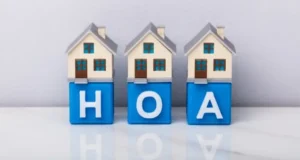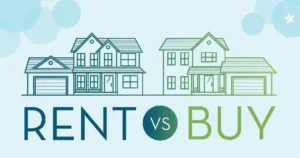Deciding whether to purchase a home now or wait for mortgage rates to decrease is one of the most common dilemmas buyers face in today’s market.
Interest rates, home prices, inflation, and market trends all play a role in influencing this decision.
In this article, we will break down the pros and cons of buying now versus waiting, explore current housing market trends, and share insights from mortgage experts about where rates may be headed.
Understanding the Current Housing Market
As of late 2024, the U.S. housing market continues to experience volatility, largely driven by fluctuating mortgage rates. According to the National Association of Realtors (NAR), the average 30-year fixed mortgage rate stands around 7.12%, marking a significant rise from 2020’s historic lows of about 3%. At the same time, home prices remain elevated, with the median price of existing homes reaching $386,200 in January 2024, a 5.6% increase year-over-year.
This upward pressure on both prices and rates has created challenges for buyers, especially first-time homeowners. The debate over whether to buy now or wait hinges on whether mortgage rates are expected to decline soon and how the current affordability trends will affect homebuyers.
Table: Key Housing Market Metrics (2024)
| Metric | Current Value (2024) |
|---|---|
| 30-Year Fixed Mortgage | 7.12% |
| Median Home Price | $386,200 |
| Year-over-Year Price Growth | 5.6% |
| Inflation Rate | 3.7% |
| National Housing Inventory | Low |
Pros and Cons: Buying a Home Now
If you’re wondering whether now is the right time to purchase a home, here are some key points to consider:
Benefits of Buying Now:
- Fixed monthly payments: Locking in today’s rate ensures your monthly mortgage payment won’t change, even if inflation rises.
- Potential equity gains: Home prices continue to rise in many markets, meaning your property value could increase over time.
- Limited competition: The combination of higher interest rates and affordability issues has reduced buyer competition in some areas.
- Inflation protection: Real estate has traditionally been a hedge against inflation, as property values tend to appreciate over time.
Drawbacks of Buying Now:
- Higher monthly payments: A 7% mortgage rate translates to significantly higher payments compared to just a few years ago.
- Less affordability: With prices remaining high, many buyers may need to stretch their budgets to purchase the home they want.
- Possibility of falling rates: If rates decrease within a year or two, buyers might feel regretful for locking in at today’s rate.
What the Experts Say About Interest Rates
Mortgage professionals are divided on whether rates will drop significantly in the near future. Here are some insights:
Sarah Martinez, Chief Mortgage Officer at HomeFirst Lending, predicts, “Rates could gradually decline to around 6.5% by mid-2025, assuming inflation stabilizes. However, I don’t expect us to see the historically low rates of 3-4% anytime soon.”
John Williams, Senior Loan Consultant at Peak Mortgage Advisors, advises caution. “It’s unlikely that we’ll see dramatic rate drops in the next 12 months. For those who need housing now, buying with the option to refinance later makes more sense.”
Thomas Green, Market Analyst at Heritage Loan Group, adds, “Homebuyers waiting for rates to fall may be disappointed. Even if rates come down, higher demand could push prices higher, making homes just as unaffordable.”
Emily Rogers, Director of Lending at Veterans Home Loans Network, suggests a balanced approach. “If rates drop significantly within the next 1-2 years, homeowners can always refinance. But waiting too long may mean losing out on the perfect home or facing rising home prices.”
Tips for Buyers: To Buy Now or Wait?
For those weighing their options, here are some strategies:
Consider Your Financial Situation:
- Do you have enough savings to cover the down payment and closing costs comfortably?
- Are you in a stable financial position to handle higher monthly payments if needed?
Explore Adjustable-Rate Mortgages (ARMs):
- ARMs offer lower initial rates, which can be a good solution if you plan to refinance when rates drop.
Look for First-Time Homebuyer Programs:
- Many state and federal programs offer financial assistance, including VA loans, which require no down payment.
Get Pre-Approved and Monitor Rates:
- Being pre-approved allows you to act quickly if you find the right property and see an opportunity to lock in a rate.
Table: Monthly Payment Comparison at Different Interest Rates
| Loan Amount | Interest Rate | Monthly Payment | Difference from 3% Rate |
|---|---|---|---|
| $300,000 | 3.0% | $1,264 | — |
| $300,000 | 6.5% | $1,896 | +$632 |
| $300,000 | 7.0% | $1,996 | +$732 |
FAQs: Should You Buy Now or Wait?
1. Are mortgage rates expected to drop in 2025?
Experts predict that rates may decrease slightly in the next 12-24 months but not to the historically low levels seen during 2020-2021.
2. Can I refinance later if I buy now?
Yes, most buyers who lock in higher rates now can refinance later if rates drop significantly.
3. Should I buy a home if I only plan to stay for a few years?
If you only plan to stay in a home short-term, buying may not be the best choice, as transaction costs can outweigh equity gains.
4. Will waiting for lower rates increase competition?
If rates drop, more buyers may re-enter the market, increasing competition and potentially driving home prices higher.
5. How do rising rates affect first-time buyers?
Rising rates make monthly mortgage payments more expensive, which can make it harder for first-time buyers to qualify for loans.
6. Are there alternatives to waiting for rates to drop?
Exploring ARMs or first-time buyer programs can provide more affordable financing options in the current market.
7. How much does a 1% increase in rates affect payments?
For every 1% increase in interest rates, your monthly payment on a $300,000 loan increases by about $200-$250.
8. What is the risk of waiting to buy?
Waiting could result in missed opportunities if home prices continue to rise, even if rates fall.















